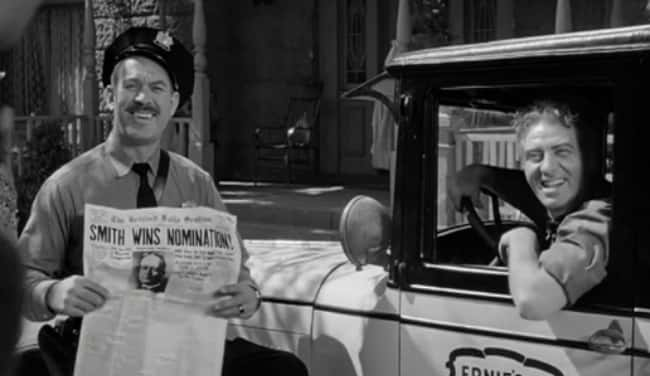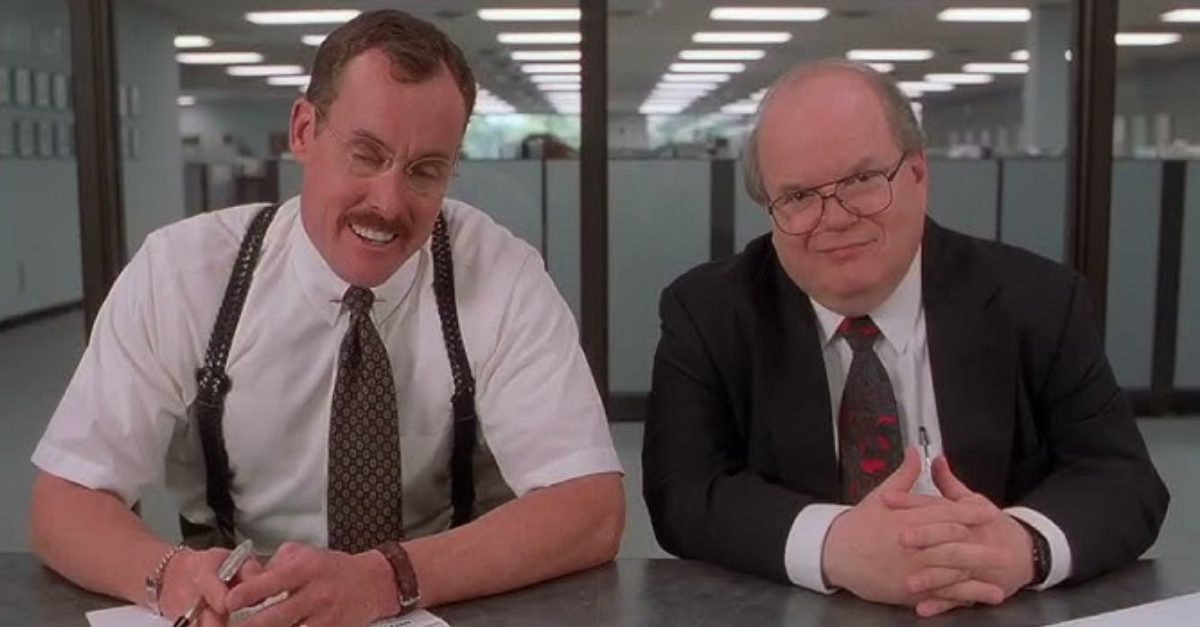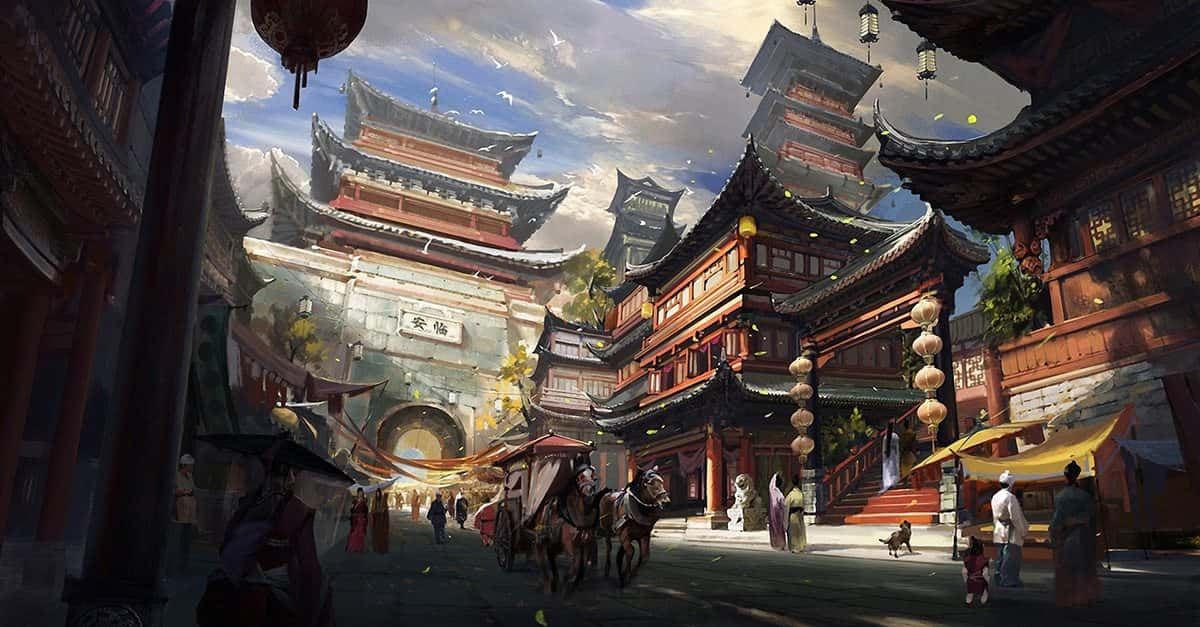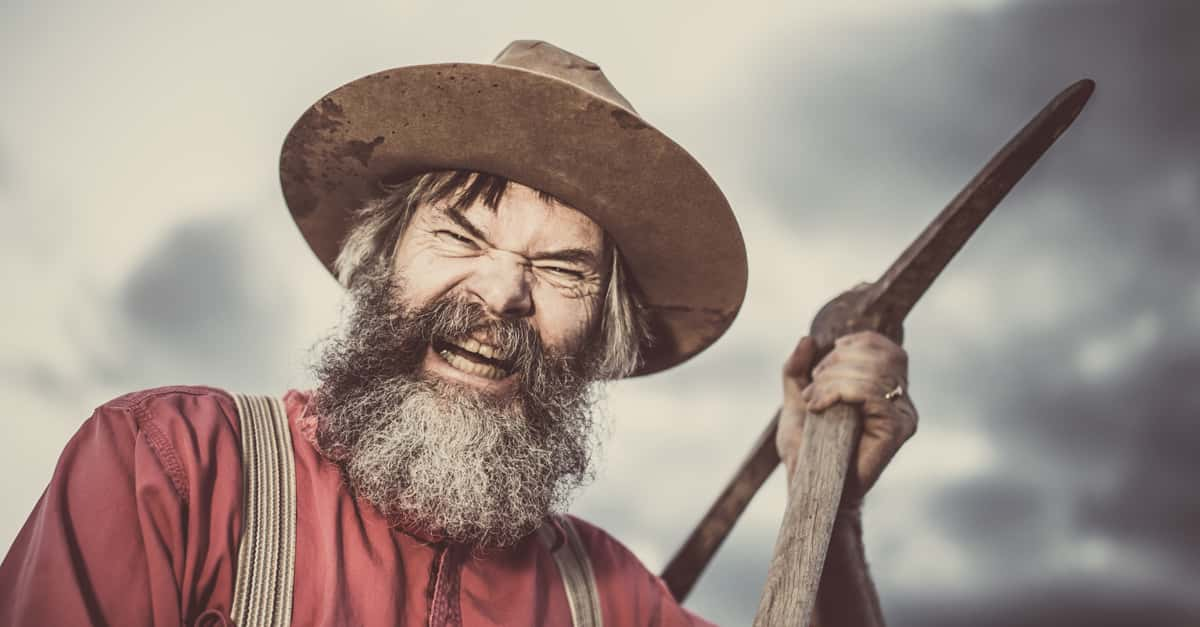Hollywood has always been an interesting place full of stories that run the gambit from being hilarious to terrifying. This was especially true in Old Hollywood, as we’ve already covered through Old Hollywood’s scandals. But what about the films they were making? Did the scandals stay offscreen? What crazy things were these eccentric artists doing in the name of getting a movie made? Find out more with these 42 wild facts about classic Hollywood movies.
42. This is Why Film Students Groan
D.W. Griffith was a Hollywood director best known for being the first director to make use of the close-up shot, the fade-out, and long shot, among other camera movements which can be seen in films everywhere today. However, the downside is that the film that introduced these innovative techniques also happened to be The Birth of a Nation, which provided a glowing view of the Ku Klux Klan.

41. Big Project
One of the most well-known epic films of all time, Lawrence of Arabia famously clocks in at a whopping 227 minutes. The film spent two years in pre-production and took 14 months to film. The locations of the shoot were stretched across Jordan, Spain, and Morocco, to name a few.
40. Those Thin-Skinned Producers…
There’s a lot to be said about Hollywood’s elite, as well as the dream factory in which millions of people poured their hearts, souls, and bodies into the very slim chance of making it in the industry. One of the sharpest criticisms of that system came from the critically acclaimed classic Sunset Boulevard, about a young screenwriter who meets an aged starlet who dreams of making a comeback. The criticism wasn’t lost on anyone, and when the film was first premiered, Louis B. Mayer, the head of MGM at the time, accosted director Billy Wilder and furiously declared that he should be “tarred and feathered and run out of Hollywood!” Wilder allegedly responded with the simple yet always effective phrase “Go f*** yourself".
39. Nowadays it’s the Bare Minimum Use of CG
People have often decried the use of computer graphics as the end of movies, but they’ve actually been around for far longer than you would think. The first Hollywood film to make use of computer graphics was Alfred Hitchcock’s Vertigo in 1958. Admittedly, the graphics were basically limited to the intro sequence, but still, it was a harbinger of things to come.
 Flickr
Flickr
38. Wait a Second…
Next time you’re watching It’s a Wonderful Life around Christmas time, you might notice that two of the supporting characters, specifically the cop and the taxi driver, are respectively named Bert and Ernie. If that sounds familiar, then you’re absolutely right, as the iconic duo on Sesame Street got their names from these two characters.
37. Decked by the Duke
Despite all the wild adventures that happened on John Huston’s film sets, one of the more frightening ones was when Huston cast legendary Western actor John Wayne in the historical drama film The Barbarian and the Geisha. Bewildered and frustrated with the film’s script and Huston’s style of filmmaking, Wayne frequently expressed his displeasure. Things apparently got so bad between the director and the lead actor that Wayne ended up punching Huston out one day! To add insult to injury, the studio took over the film in the editing process, leaving very little of Huston’s vision in the finished project. It ended up being a financial and critical flop, which hopefully didn’t inspire Wayne to punch Huston a second time!
36. Art Imitating Life
One of the most famous films of Steve McQueen’s career was The Great Escape, set during the WW2 and focusing on Allied army trying to escape imprisonment. One of the more famous scenes involves McQueen’s character fleeing from a number of Germans on a motorcycle. Ironically, McQueen was pulled over by German officers during the production and jailed for speeding!
 The Great Escape, 1963, The Mirisch Company
The Great Escape, 1963, The Mirisch Company
35. Too Much Method Acting?
One of the other big stars of The Great Escape was Charles Bronson, playing the character of Danny the “Tunnel King". During the film, Danny reveals that while he is an expert at digging tunnels, he suffers from claustrophobia. In a strange twist, Bronson had worked as a coal miner before he’d turned to acting and brought some professional experience to the set with him. What he also brought was his own, very real, claustrophobia, which he’d gotten while working in the mines. We’re starting to wonder if he’d been asked to write his own character.
 The Great Escape, 1963, The Mirisch Company
The Great Escape, 1963, The Mirisch Company
34. They Just Got Angrier
While filming the classic 12 Angry Men, director Sidney Lumet insisted that the actors spend several hours in the same room together going over the script. He didn’t even film these takes, he just wanted the actors to get a real idea of what it would be like to be stuck in the same room with the same people for hours on end.
33. Baldness. Pattern Baldness.
From the very start of his time as James Bond in the 1962 film Dr. No, Sean Connery was actually wearing a toupee.
 Flickr
Flickr
32. Oops! Never Mind!
Casablanca, first released in 1942, has wowed audiences with the story of the love triangle between Rick (Humphrey Bogart), Ilsa (Ingrid Bergman), and Laszlo (Paul Henreid). However, the initial report from The Hollywood Reporter was that someone else had been cast as Rick rather than Bogart: a young actor named Ronald Reagan. However, the announcement was later debunked as an attention-seeking ruse on behalf of Reagan.
31. It Took Them How Long?!
The first African-American to win an Academy Award for acting was Hattie McDaniel for her performance in the 1939 film Gone with the Wind. While some might be impressed with that triumph for McDaniel as being ahead of its time, it should be noted that it took the Academy another twenty-four years to award another person of color an Oscar for Acting. That honor went to Sidney Poitier for his performance in the 1963 film Lilies of the Field. On another sad note, McDaniel couldn’t even attend the premiere of her own film, due to biased segregation laws in Alabama. Clark Gable threatened to boycott the event but McDaniel urged him to go anyway.
30. Adults Only!
Who’s Afraid of Virginia Woolf is arguably one of the most harrowing films that couple Elizabeth Taylor and Richard Burton made together, and it underwent a furious lawful battle to even get released due to the highly adult subject matter for the time. It was ultimately the first film released in the United States to be forbidden to anyone under the age of 18. Naturally, it was a smash hit, making $40 million on a budget of less than $8 million.
 Who’s Afraid of Virginia Woolf, 1966, Warner Bros.
Who’s Afraid of Virginia Woolf, 1966, Warner Bros.
29. What are the Odds?
There has only been one time in Hollywood history when a book written by a Nobel Prize-winning author was adapted into a film by another Nobel Prize-winning author. This one example was when Ernest Hemingway’s To Have and Have Not was adapted for the screen in 1945 by William Faulkner, who had gone into screenwriting while also providing the world with such classic novels as The Sound and the Fury and Absalom, Absalom!
28. Oh Snap
Despite this team-up on a film project—technically, anyway—and despite their equal importance in the world of American literature, Hemingway and Faulkner had less-than-stellar opinions of each other. Faulkner once claimed that Hemingway was “never been known to use a word that might cause the reader to check with a dictionary to see if it is properly used". For his part, Hemingway was later asked what he thought of Faulkner’s opinion, and he simply remarked “Poor Faulkner. Does he really think big emotions come from big words? … Did you read his last book? It’s all sauce-writing now, but he was good once. Before the sauce, or when he knew how to handle it". Ouch!
27. Seems Pretty Tame Now
The famous line “Frankly my dear, I don’t give a darn” is one of the main things people have always remembered about Gone with the Wind. However, as iconic as that line was, it got producer David O. Selznick in quite a bit of trouble. He was actually fined $5,000 for the excessive language. We’ll let you readers take a moment to realize just how far we’ve come with what’s allowed to be said onscreen in the cinema nowadays.
 Gone with the wind , 1939, Metro-Goldwyn-Mayer
Gone with the wind , 1939, Metro-Goldwyn-Mayer
26. The Big Five
The first film to sweep the Oscars, winning Best Picture, Best Director, Best Lead Actor, Best Lead Actress, and Best Adapted Screenplay was the Frank Capra film It Happened One Night in 1934. This accomplishment wouldn’t be repeated until One Flew Over the Cuckoo’s Nest, around 40 years later.
25. Remember to Recycle!
In one of the more iconic scenes in Gone with the Wind, the city of Atlanta is burned during the Civil Battle To achieve this terrifying spectacle in an age without CGI, the filmmakers ended up burning the sets of a bunch of older movies that the studio didn’t mind throwing away. These included sets from the original King Kong.
 Gone with the wind , 1939, Metro-Goldwyn-Mayer
Gone with the wind , 1939, Metro-Goldwyn-Mayer
24. Jungle Cruise
The film shoot for The African Queen has gone down as one of the most storied shoots in Hollywood history. A large part of that was due to the fact that director John Huston took the production deep into the jungles of Africa, so they could film on location. Unfortunately, this left them at the mercy of torrential rains, countless wild animals, some of them poisonous or dangerous, and tainted drinking water.
 The African queen, 1951, Horizon Pictures
The African queen, 1951, Horizon Pictures
23. I Don’t Want to Know Your Blood-Booze Level…
Speaking of the bad water, it was reported that virtually the entire cast and crew of The African Queen came down with dysentery at some point during the production. Two notable exceptions were director John Huston and lead actor Humphrey Bogart, who both allegedly drank nothing but imported Scotch moonshine. As Bogart later famously remarked, “Whenever a fly bit Huston or me, it dropped for good".
 The African queen, 1951, Horizon Pictures
The African queen, 1951, Horizon Pictures
22. What Song Are We Playing?
The great irony of Casablanca’s famous line, “Play it again, Sam” isn’t just that the line was never actually said in the finished film; Dooley Wilson, who played Sam, couldn’t play the piano! While Wilson was certainly a talented musician, he was actually a drummer. He had to mime the piano-playing of a pianist off-screen while filming took place.
21. Who Knew Mocking Adolf H. Would End a Career?!
Charlie Chaplin’s 1940 Hollywood film The Great Dictator was ahead of its time, in the sense that he was criticizing and parodying German dictator Adolf H. before the United States had even declared battle on Germany. Incredibly, this brazen opposition to Adolf H. got Chaplin in a lot of trouble with the FBI, who marked him down as a “premature antifascist". Chaplin was eventually brought before the US Senate and the House Un-American Activities Committee—remember them?—where his left-wing views got him branded a communist. His films flopped in the US, and when he returned to London to attend the premiere of his film Limelight, his American visa was revoked, exiling him. Chaplin didn’t return to the US until 1972 when he received an Honorary Academy Award, presumably with “Sorry” etched into the plaque.
20. Don’t Tell My Insurance
In 1960, The Magnificent Seven was released, the first major film success for its co-star Steve McQueen. However, McQueen nearly missed out on being cast in the film due to his commitment to the television series Wanted: De*d or Alive. McQueen’s solution was to deliberately crash his car and claim he was too injured to work on the show. Thanks to his experience as a race car driver, McQueen had been able to avoid serious injury in the crash, while also getting time off from the show to recuperate. And what better way to recuperate than to go down to Mexico and shoot a classic Western?
 The Magnificent Seven, 1960, The Mirisch Company
The Magnificent Seven, 1960, The Mirisch Company
19. I Was There at the Start…
In 1950, John Huston directed The Asphalt Jungle, which is still considered to be one of his best films. Among the stellar cast was a young actress named Marilyn Monroe. Despite her relatively small role, the film is credited with launching Monroe’s career in Hollywood. Monroe herself claimed that Huston was a “genius” and credited him with making her feel like she had finally broken into professional acting.
 The Asphalt Jungle, 1950, Metro-Goldwyn-Mayer
The Asphalt Jungle, 1950, Metro-Goldwyn-Mayer
18. … And I Was There at the End
Huston later cast Monroe in his 1961 film The Misfits. Sadly, despite its success, the film has gone down in history as having been a curse upon many of those who worked on it. The curse seemed to especially affect Monroe. Not only was she struggling with a serious drug addiction during filming, her marriage to Arthur Miller collapsed “virtually on set". She never made another film again, dying less than a year later.
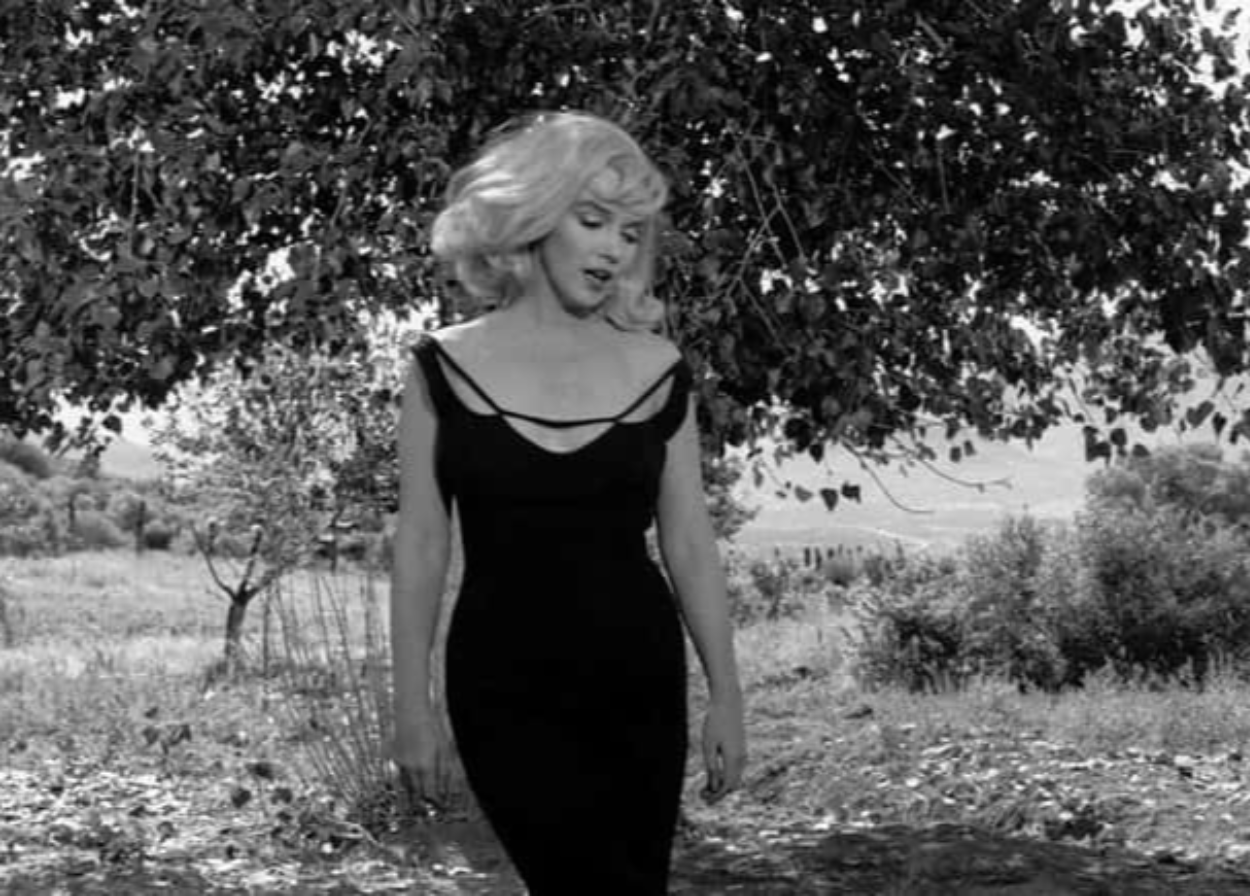 The Misfits, 1961, Seven Arts Productions
The Misfits, 1961, Seven Arts Productions
17. Former Friends
One of the big epic films of the early ‘60s was Spartacus, starring Kirk Douglas and directed by a young Stanley Kubrick. Kubrick had only been brought on to direct the film when Douglas, who was also serving as an executive producer of the film, clashed with Anthony Mann over the film. He fired Mann, and brought in Kubrick, with whom he’d made the film Paths of Glory. However, their former friendship soured quickly as they also clashed over the direction of the film and the creative process. Kubrick also infuriated Douglas by offering to take credit for the screenplay rather than give it to the blacklisted Dalton Trumbo. Douglas ensured that Trumbo got his credit, and even began to regret firing Mann. For his part, Kubrick made sure that he had 100% creative control over his films for the rest of his career.
 Sparatcus, 1960, Universal Pictures
Sparatcus, 1960, Universal Pictures
16. Help Me, Clarence!
If you asked someone to name a Frank Capra film, they’d probably name It’s a Wonderful Life before anything else. It’s become one of the great Christmas classics over the years. However, the film was a box office flop when it was first released. The film’s failure forced the production company which funded it to be sold off, while Capra commented that the film had been “fatal to [his] professional career". Not only that, the film’s messages were deemed to lean towards communism, and Capra was investigated by the FBI and the House Un-American Activities Committee. We’d like to think that the committee was headed by a grumpy old man in a wheelchair who looked a lot like Lionel Barrymore…
 Flickr
Flickr
15. An Eventual Happy Ending
The only reason that It’s a Wonderful Life became so well-loved later on was because it fell into the public domain in 1974. TV stations looking for a free movie to air during the holidays found the perfect candidate: a Christmas movie with well-known actors that didn’t cost them a penny to air. Over time, people came to see the film as a classic, and the tradition of seeing it on TV during Christmas continues to this day.
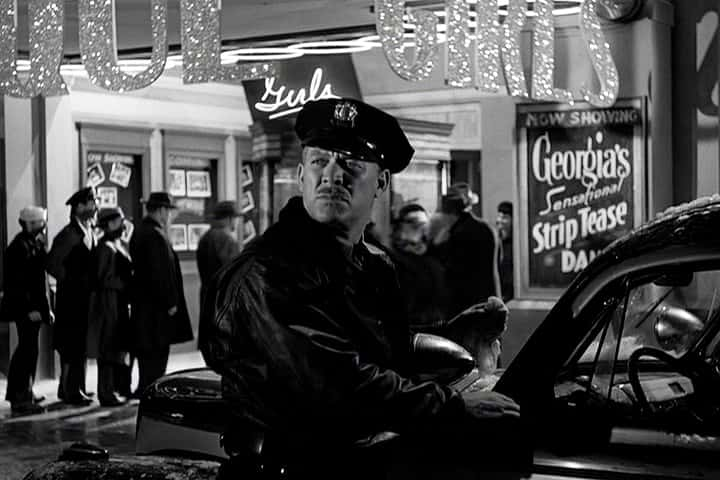 Flickr
Flickr
14. You Stupid Dirty Ape!
Controversial filmmaker Sam Peckinpah was famous for making such movies as The Wild Bunch, Straw Dogs, and Bring Me the Head of Alfredo Garcia, all of which would inspire the likes of Quentin Tarantino and Oliver Stone. However, in 1965, his directing career almost was ended prematurely with the production of Major Dundee, starring Charlton Heston as a Union cavalry officer who leads a ragtag expedition into Mexico after a group of Apache raiders. The production was deeply troubled due in part to the fact that Peckinpah was a notorious alcoholic. His drunken behavior on the set, as well as his verbal comments towards cast and crew, infuriated Heston to the point that he threatened to attack Peckinpah with his saber. On another occasion, he actually charged at Peckinpah while on horseback.
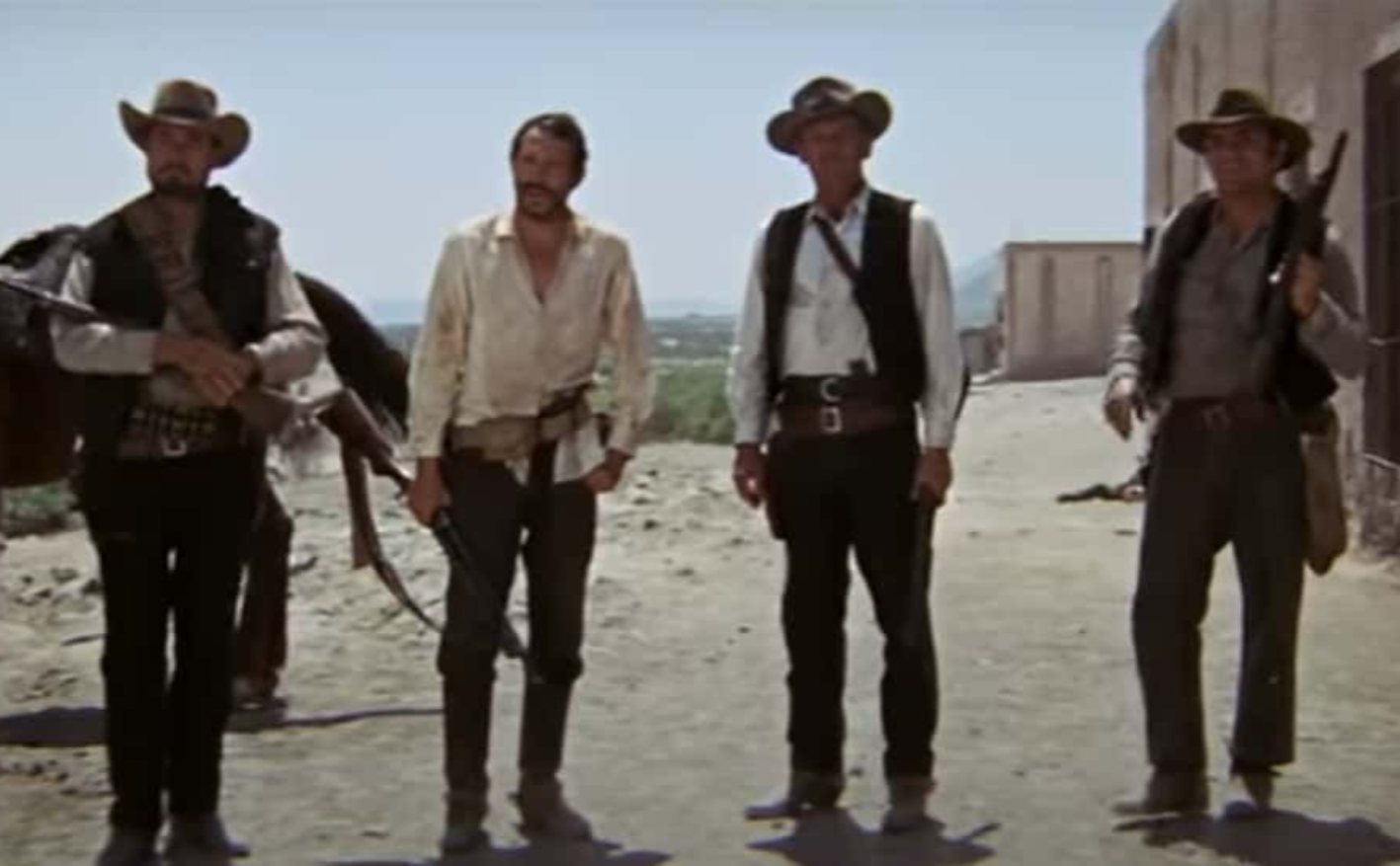 The Wild Bunch, 1969, Warner Bros.
The Wild Bunch, 1969, Warner Bros.
13. Not This Time, Sam
Despite Peckinpah’s antagonizing behavior, there’s no doubt that he inspired loyalty from those who worked with him. Even Heston came around to Peckinpah when the studio got cold feet with Peckinpah and cut short the production by several weeks of filming. In an amazing act of allegiance, Heston gave up his salary to keep Peckinpah in the director’s seat while also letting him finish the project. An admirable gesture, but the studio didn’t keep their end of the bargain- they didn’t give Peckinpah the final cut, and the film’s release was nothing short of disastrous, leading Peckinpah to be blackballed in Hollywood for years.
 Wikimedia.Commons
Wikimedia.Commons
12. A Man of Principles
The entirety of the 1956 film adaptation of Herman Melville’s Moby D. was filmed in Ireland over the course of three years. Even the seaside community of New Bedford, Massachusetts, was replicated overseas. One of the main reasons for this filming location was because director John Huston had left the United States in protest. During the 1950s, the House Un-American Activities Committee was feeding the fires of McCarthyism by investigating people in the film industry suspected of being communists and destroying their careers if they were found guilty, or if they refused to testify. Huston furiously opposed these measures before becoming so fed up that he moved to Ireland and lived there for years. Say what you will about Huston, but he put his money where his mouth was.
11. Mixed Feelings
One of the biggest stars of his day, William Holden won his sole Academy Award for his performance in the 1953 WWII prisoner-of- battle film Stalag 17. However, the great irony was that he had never wanted to act in the film at all! He found his character, Sefton, to be too unlikable for a protagonist, but he was ultimately forced to do the role by the studio with whom he was signed at the time. He viewed his Academy Award as being entirely undeserved, and when he accepted it, he simply said “Thank you” and left. It remains one of the shortest acceptance speeches in the history of the Oscars.
 Stalag 17, 1953, Paramount pictures
Stalag 17, 1953, Paramount pictures
10. Snubbed Twice Over
Speaking of Stalag 17, its director, Billy Wilder, ended up with a bad taste in his mouth, despite the film’s critical and commercial success. During production, Wilder had been approached by the producers at Paramount, who expressed concern that the film might rouse hostility with German audiences. They asked Wilder to change the nationality of the lock up camp commanders to being Polish instead of German. Wilder was livid—both his mother and stepfather had perished in concentration camps—and demanded an apology. Not only was an apology never given, but the studio accountants also took money from the film’s profits which should have gone to Wilder and claimed it was compensation for an earlier film he’d made which had lost Paramount money. You can’t blame Wilder for leaving Paramount after that.
 Stalag 17, 1953, Paramount pictures
Stalag 17, 1953, Paramount pictures
9. He Sure Dodged a… Never Mind…
Originally, the Cold Battle black comedy Dr. Strangelove was supposed to end with the Russian ambassador, the President of the US, Dr. Strangelove, and the rest of the generals and advisors getting into a huge pie fight in the Command Room. General Turgidson, played by George C. Scott, was meant to see his President hit in the face with a pie and exclaim “Gentlemen! Our gallant young president has just been struck down in his prime!” The line became far incredibly awkward when President John F. Kennedy was ended just after filming had wrapped, but thankfully nobody heard it. Stanley Kubrick cut the whole pie fight sequence as it felt too silly compared to the rest of the film.
8. Fight Fire with Ice
Even when Kubrick was starting out in his career, he became well known for his attention to detail and his willingness to shoot multiple takes in order to get the perfect shot. On Paths of Glory, according to the lead actor Kirk Douglas, Kubrick demanded another take from actor Adolphe Menjou after having already asked for 17 takes. Menjou lost his temper in front of the entire cast and crew, screaming at Kubrick and hurling insults at him while Kubrick sat silently. After Menjou’s text was finished, Kubrick quietly said “All right, let’s try the scene once more". Menjou immediately complied, and we can only assume that nobody ever dared challenge Kubrick’s direction on that set ever again.
 Paths of Glory, 1957, Bryna Productions
Paths of Glory, 1957, Bryna Productions
7. Based on a True Story
Citizen Kane has been hailed as one of the best—if not the best—American films ever made. However, while it was being made, it earned the wrath of newspaper mogul William Randolph Hearst, who was one of the real-life inspirations for the character of Charles Foster Kane. He was so infuriated, in fact, that he used his position as the head of 20 different newspapers to smear the name of filmmaker Orson Welles, accusing him of being a communist and forbidding any of his newspapers from writing a review of the film when it came out.
 Citizen Kane, 1941, Mercury Theatre
Citizen Kane, 1941, Mercury Theatre
6. Manufacture a Scandal
Allegedly, during the filming of Citizen Kane, William Randolph Hearst also arranged for a undressed woman to hide in Orson Welles’ room and jump into his arms when he came in from a day’s work. A photographer, also hiding in the room, would snap a picture of the scene to create a scandal around Welles to damage the film’s credibility. Welles, however, heard about the scheme and checked into another hotel, though it’s never been proven whether this scheme had actually been carried out. It makes us wonder what that woman and that photographer must have talked about all that time while waiting for Welles to show up…
 Citizen Kane, 1941, Mercury Theatre
Citizen Kane, 1941, Mercury Theatre
5. A Mean Trick
Vertigo has come to be known as one of Alfred Hitchcock’s best movies. However, it was a box office disappointment when it was first released. Some argued that Jimmy Stewart, a longtime collaborator of Hitchcock’s and the star of Vertigo, looked too old for the role he had played. Hitchcock, meanwhile, was gearing up for North by Northwest, intending to cast Cary Grant. However, through a misunderstanding, Stewart assumed that he was meant to play the lead in the new film and was very eager to do so. Rather than devastate him with a refusal, Hitchcock delayed the production until Stewart had signed on for Anatomy of a M*rder. Hitchcock then freely asked Stewart to play the lead, knowing Stewart would have no choice but to turn it down, so he could cast Grant guiltfree. To add insult to injury, Grant was actually 4 years older than Stewart!
 Flickr
Flickr
4. Hollywood Irony
The Ten Commandments, starring Charlton Heston and Yul Brynner, is one of the most famous Biblical epics in Hollywood history. However, the film was utterly grueling to work on. Filming lasted nearly a year, with over 14,000 extras and 15,000 animals being used to shoot this gargantuan picture. Director Cecil B. DeMille came to define the image of an Old Hollywood director by sitting in his chair with a megaphone handy to address everyone. According to Heston, he once overheard one of the female extras exclaim “Who do I have [sleep with] to get OUT of this movie?!”
 The Ten Commandments, 1956, Paramount Pictures
The Ten Commandments, 1956, Paramount Pictures
3. Underrated Gem
One of Orson Welles’ lesser-known films was the 1946 film noir The Stranger. The film followed a battle brutality investigator, played by Edward G. Robinson, tracking down a German offender, played by Welles, who is hiding under a false identity in a small American town. Despite the fact that few people remember this flick, The Stranger was one of the only films in Welles’ directing career to be a box office success upon its initial release—not even Citizen Kane accomplished that.
 Wikimedia.Commons
Wikimedia.Commons
2. Nightmarish Acts of the Nazis
On a more sinister note, Orson Welles’ The Stranger holds the dubious honor of being the first Hollywood film to depict documentary footage of the Holocaust. This was made more important due to the fact that in 1946, there was a large percentage of people who either didn’t know about the German concentration camps or denied their existence. Welles was determined that the world know about the horrors which had been committed during the Holocaust.
 Wikimedia.Commons
Wikimedia.Commons
1. Fallen Rebels
We've all heard of cursed productions like Poltergeist, but Rebel Without A Cause may have been the original cursed production: all three of the lead actors passed young under tragic circumstances. James Dean infamously perished in a car crash in 1955, Natalie Wood drowned in 1981, and Sal Mineo was hurt and passed in 1976.
 Rebel without a cause, 1955, Warner Bros.
Rebel without a cause, 1955, Warner Bros.
Sources: 1, 2, 3, 4, 5, 6, 7, 8, 9, 10, 11, 12, 13, 14, 15, 16, 17, 18, 19, 20, 21, 22, 23, 24, 25, 26, 27, 28




